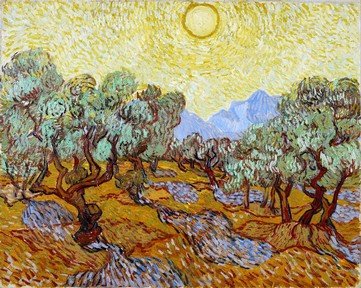Quiz Answer Key and Fun Facts
1. Which painter used a number of musical terms for his artworks? Some of these include "Nocturne in Gold and Blue: Valparaiso Bay" and "Harmony in Blue and Silver: Trouville". His masterpiece is "Arrangement in Grey and Black Nr. 1" (1871) - I won't give you the subtitle, for this would make things far too easy.
2. The French painter Henri de Toulouse-Lautrec spent many hours in the Parisian nightlife. He portrayed some of the very popular night club dancers of that era. Who was the dancer portrayed by Toulouse-Lautrec in 1892, in 1893 and in 1899?
3. A British painter portrayed the German composer Johann Christian Bach (son of the great Johann Sebastian) in 1776. Which famous portrait painter made this picture?
4. In 1615, Domenichino painted the patron saint of music before the judge. Who was this female saint?
5. Which Finnish architect designed the Opera House in Essen, Germany, completed by his widow in 1988?
6. The Dutch painter we're looking for in this present question was fascinated by musicians and musical instruments. I'll give some titles: "Girl Interrupted at her Music" (1661), "Woman with a Lute near a Window" (1663) and "Lady Standing at a Virginal" (1675). Only thirty-odd paintings were ascribed to this Dutch artist, and at least eight of them are related to music. Which painter produced these artworks?
7. The Spanish painter Juan Gris made a painting of a "Harlequin with Guitar". Which other, more famous Spanish painter completed in 1918 a "Harlequin Playing the Guitar"? Answer with his first Christian name and his last family name (with a nice alliteration), for he bears no less than *eleven* first names and two surnames.
8. You might have wondered where the title of this series of quizzes ("Pictures at an Exhibition") found its origin. Well, a Russian composer entitled one of his piano suites "Pictures at an Exhibition". He completed this suite in 1874. Ilya Repine portrayed this Russian composer, but the date of the portrait is not known. Who was this composer?
9. All of the following artists made some artwork depicting Orpheus, the mythical lyre player who could make everybody feel compassion - even Hades, the God of the Underworld himself. One of these artists made a painting, the others sculpted Orpheus. Who completed, in 1865, the painting to which I refer?
10. Which French Impressionist left us a "Young Flautist" playing a piccolo and dressed in the uniform of the Zouaves? The painting dates from 1866.
Source: Author
JanIQ
This quiz was reviewed by FunTrivia editor
agony before going online.
Any errors found in FunTrivia content are routinely corrected through our feedback system.
